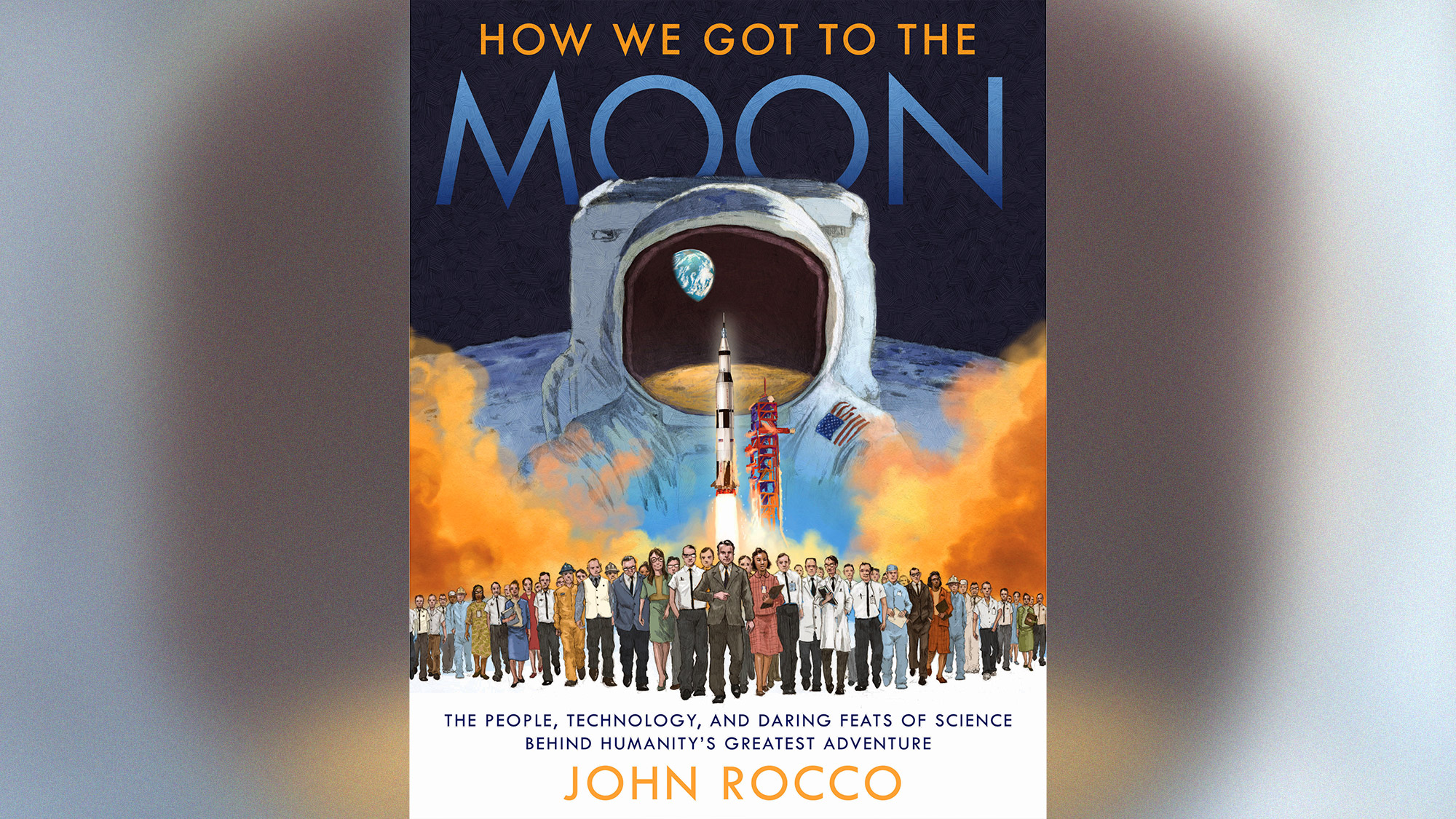New book 'How We Got to the Moon' will reveal a stunning look at Apollo 11 (cover reveal)
In the new children's book "How We Got to the Moon" (Random House Children's Books, 2020), award-winning author and illustrator John Rocco beautifully recounts humanity's journey to the moon with NASA's Apollo program.
We will delve into the details of the book, which will go on sale Oct. 6 (you can pre-order here), closer to its release date. But for now, we can take a sneak peek at the book's cover and some of the stunning images that will splash across its pages.
Reading Apollo 11: The best new books about the US moon landings
"How We Got to the Moon: The People, Technology and Daring Feats of Science Behind Humanity's Greatest Adventure" (Random House Children's Books, 2020)
John Rocco's beautiful new book on NASA's Apollo moon landings will go on sale this October 2020, but you can pre-order the book now!
The cover, which shows a multitude of individuals who contributed to NASA's Apollo program and helped to land the first humans on the moon, gives a perfect window into what the book is all about. In "How We Got to the Moon," Rocco, who illustrated the "Percy Jackson" series, profiles, illustrates and explains the work of a wide variety of NASA engineers, scientists and more who made the mission possible.
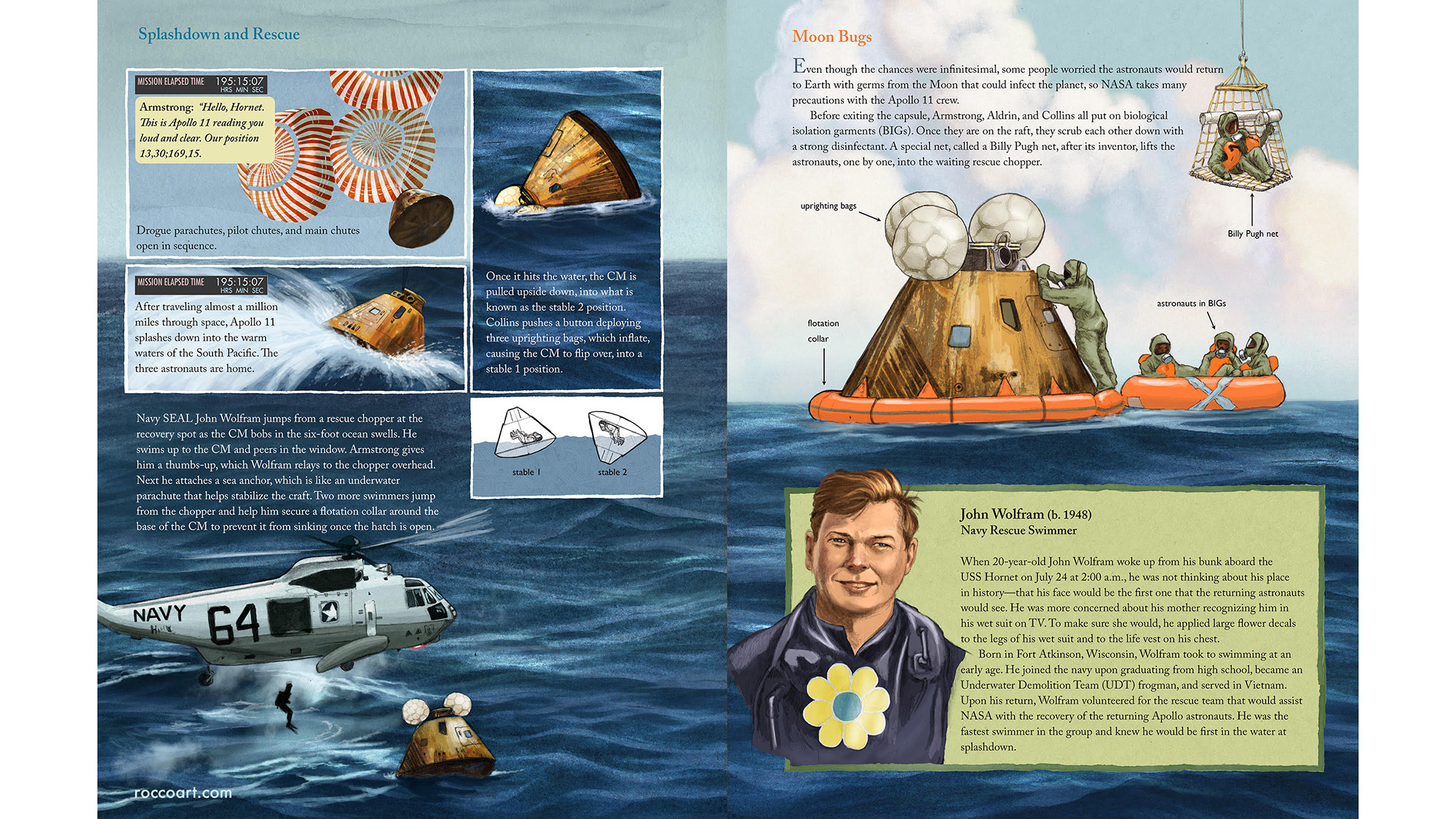
Landing the Apollo astronauts in the ocean.

How the Apollo parachutes were made and a little bit about how they worked to land the astronauts back on Earth.
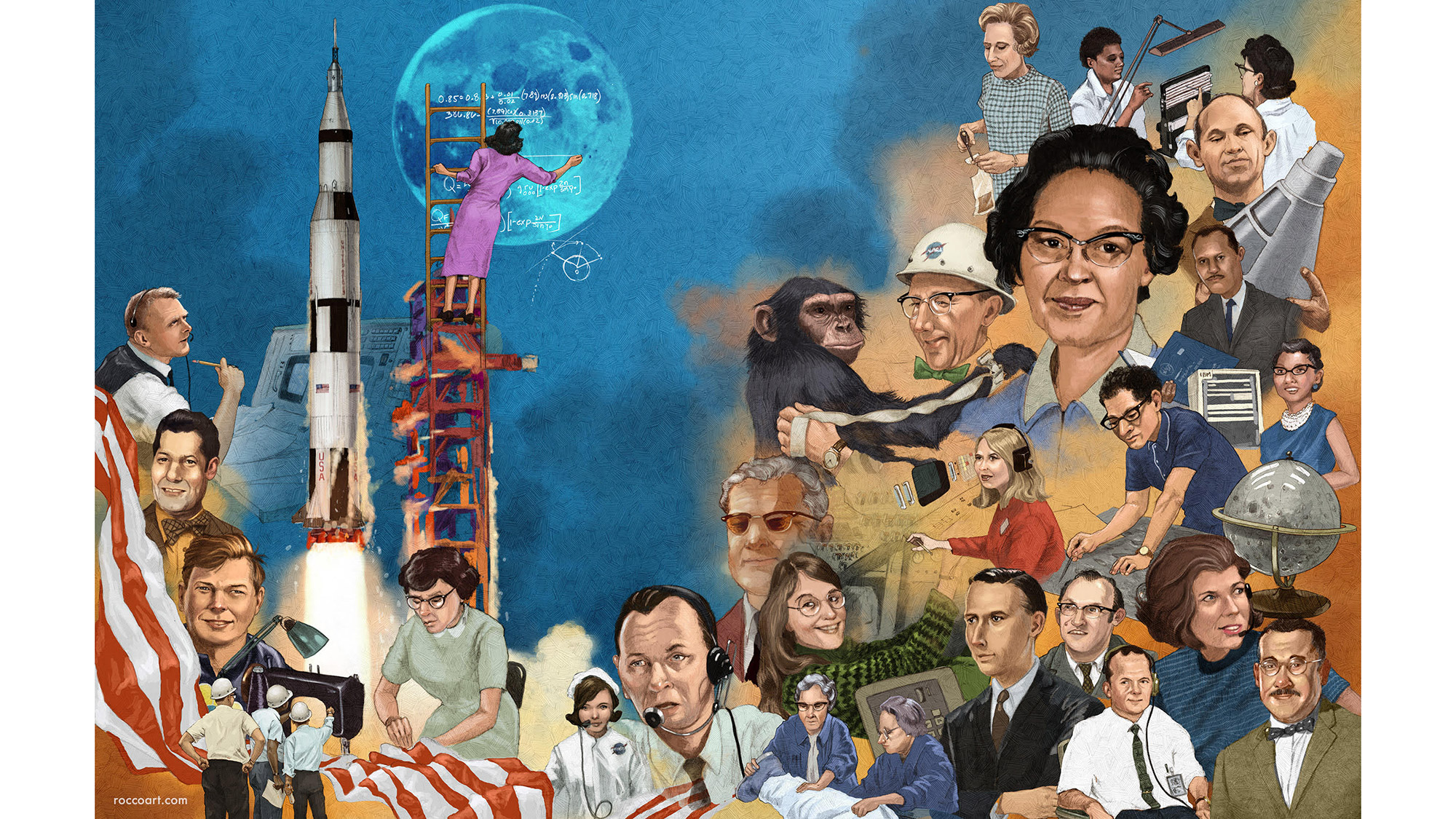
An illustration of some of the people who helped to land the first humans on the moon.
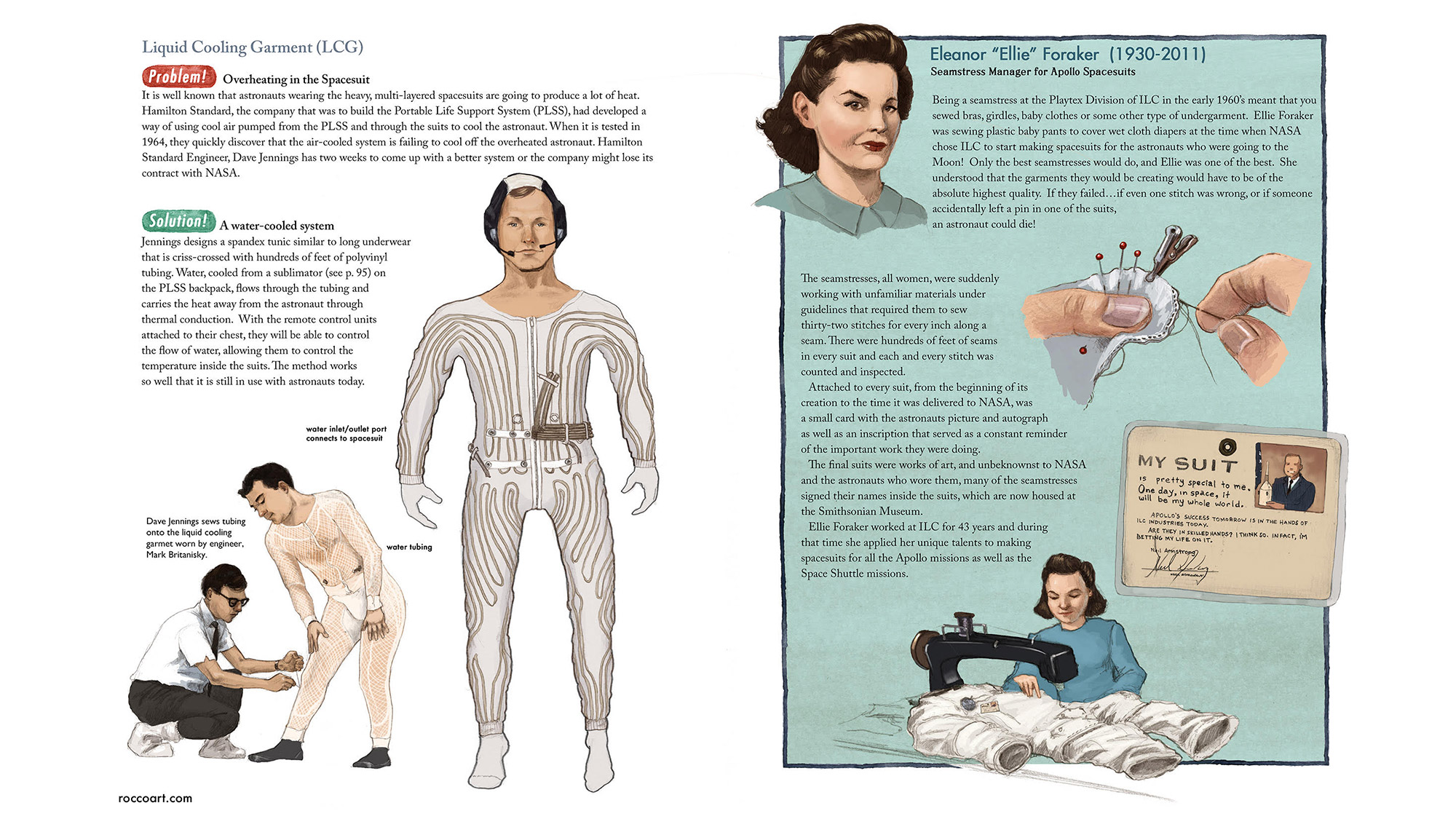
A peek into how the Apollo spacesuits were engineered and designed.
As Rocco explained to Space.com, the book shows the journey of how we got to the moon, "what do we have to build, how are we going to make it, and all of the problems and all of the solutions that they [the engineers] came up with." He noted that the book will show how such an incredible feat was accomplished without the technology we have today.
For the book, Rocco spoke with roughly two dozen Apollo engineers, both men and women, about the work that they did and their experiences landing the first humans on the moon. Talking to the engineers, who are largely in their 80s and 90s, was "a hoot," Rocco told Space.com.
"Whenever I was working on the book and I had a question, I could just call them up and say, 'Hey, I don't understand — how does this pipe that goes from here to here, what does that do and why?'" Rocco said. "It was a blast."
Breaking space news, the latest updates on rocket launches, skywatching events and more!
Slideshow: How NASA's Apollo astronauts went to the moon
Not only did this research help to ensure that he was exceptionally accurate in writing the book, but it also put Rocoo in touch with the people who aren't usually seen in books, as opposed to the Apollo astronauts themselves. "I wanted to put a face to some of these people," Rocco said.
He added that "I also wanted to show there was — even though when we picture [an] Apollo engineer, we picture the guy in the white shirt with the thin black tie and the pocket protector … there wasn't a lot, but there was diversity."
Rocco not only shares the stories and work of women and people of color, but also made sure to illustrate that diversity. "I wanted a kid to open the book and say, 'Oh, there's someone that looks like me,'" Rocco said. "By making this book, No. 1, I hopefully want to inspire future engineers."
- Relive Apollo 11 Moon Landing Mission in Real Time
- Why the Lunar Module Looked So Much Like a Moon Bug
- Could NASA Build the Saturn V Today? It's Working on It, with a Twist
Follow Chelsea Gohd on Twitter @chelsea_gohd. Follow us on Twitter @Spacedotcom and on Facebook.
OFFER: Save at least 56% with our latest magazine deal!
All About Space magazine takes you on an awe-inspiring journey through our solar system and beyond, from the amazing technology and spacecraft that enables humanity to venture into orbit, to the complexities of space science.
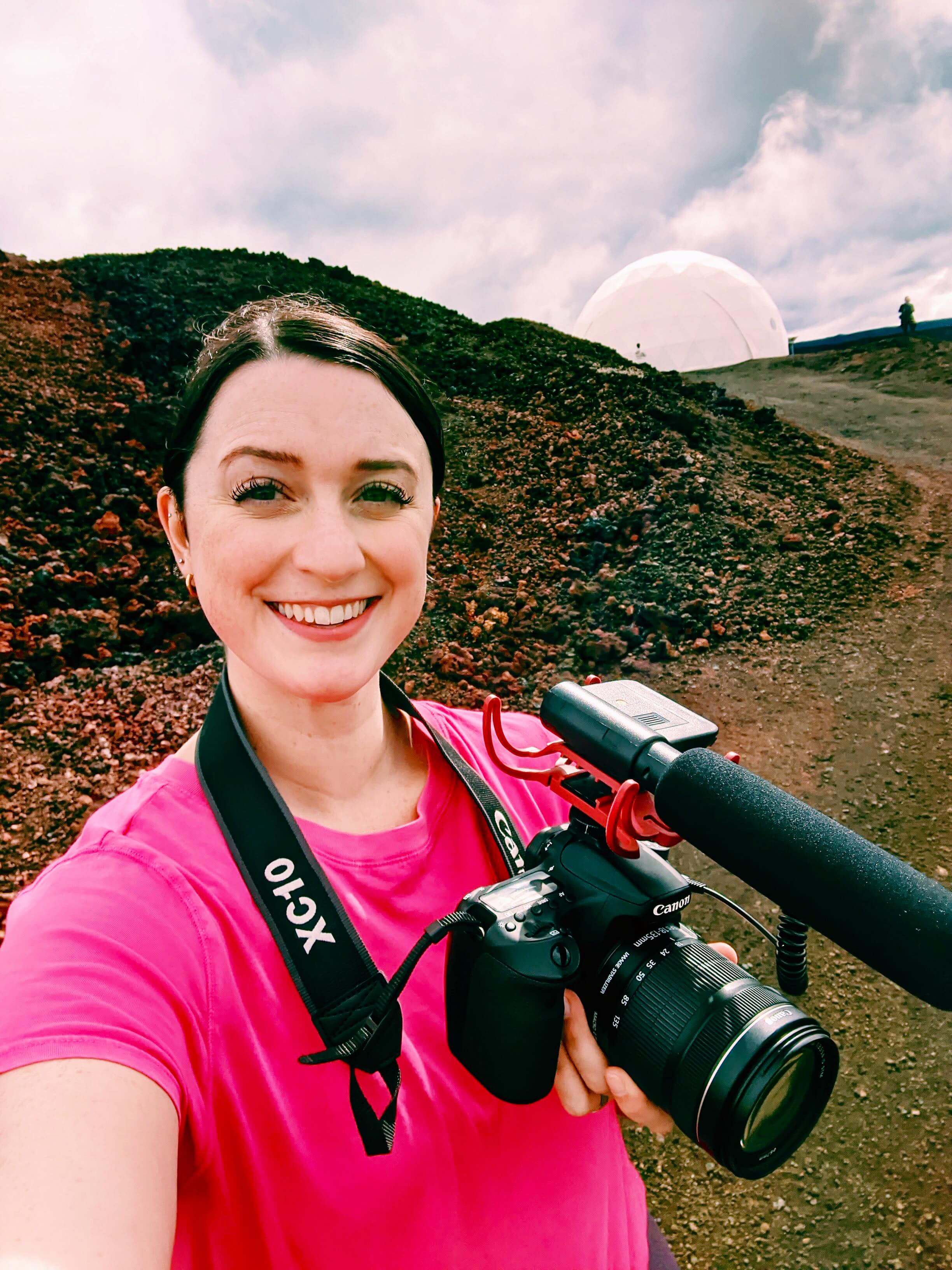
Chelsea “Foxanne” Gohd joined Space.com in 2018 and is now a Senior Writer, writing about everything from climate change to planetary science and human spaceflight in both articles and on-camera in videos. With a degree in Public Health and biological sciences, Chelsea has written and worked for institutions including the American Museum of Natural History, Scientific American, Discover Magazine Blog, Astronomy Magazine and Live Science. When not writing, editing or filming something space-y, Chelsea "Foxanne" Gohd is writing music and performing as Foxanne, even launching a song to space in 2021 with Inspiration4. You can follow her on Twitter @chelsea_gohd and @foxannemusic.
